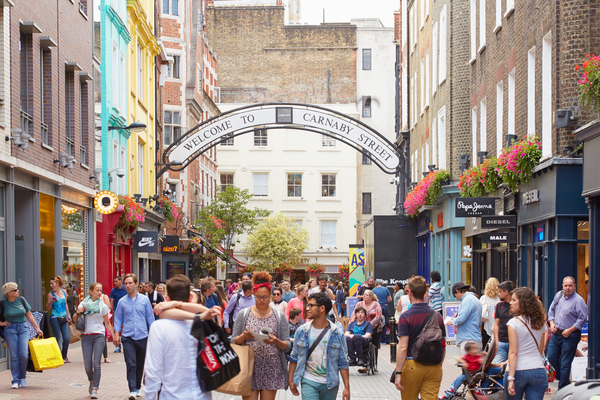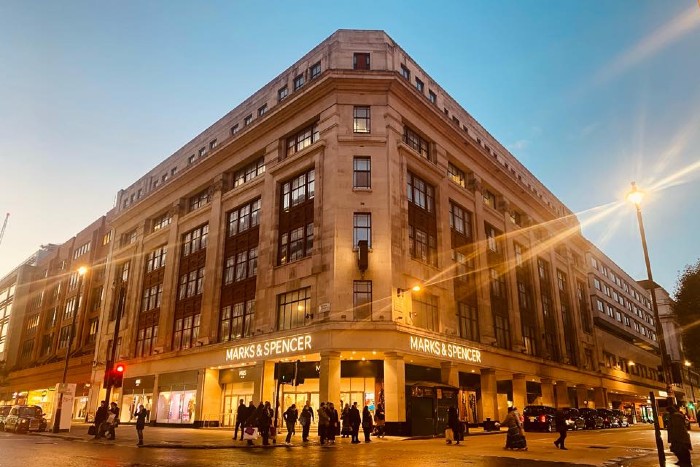Historically, the location of retailers has always been important. After all, it is a key factor in attracting customers – from office workers, local residents, commuters and tourists.
However, with an unprecedented shift to both online shopping and shopping on local high streets thanks to stay-at-home orders amid the Covid-19 pandemic, is the location of retail stores still as important now as it was before? Especially since the pandemic wreaked havoc on major town centres or prompted the closure of many iconic retailers in shopping destinations across the UK?
Samantha Mansfield, head of strategy EMEA at LiveArea, said the days of large, flagship stores could be over entirely.
“At the very least, their role will likely shift dramatically from a place to warehouse and display large quantities of product to a place where customers can connect with and experience the brand and their products,” she told Retail Gazette.
She explained that the popular American retailer Dick’s Sporting Goods recently added 17,000sq ft turf fields to two of their locations, with the fields surrounded by an Olympic size track which could double as an ice-skating rink in the winter.
Mansfield believes this could soon be replicated in the UK.
“Over the pandemic, consumer demand changed rapidly, and retailers had to reinvent themselves to provide new, innovative ways of shopping,” she added.
“The reopening of the high street may have been a shot in the arm, but we’re unlikely to see footfall return to pre-pandemic levels without a draw other than the act of product purchase.
“The closing of physical stores for extended periods of time has accelerated the need for digital transformation.
“We are, for now at least, out of lockdown, but the pandemic will have a lasting effect on brands and their physical stores.”

At the beginning of the year Topshop’s flagship store on London’s Oxford Street officially closed its doors, marking the end of an era, but it wasn’t the only casualty at the famous shopping destination.
Over 13 per cent of occupants on the UK’s busiest high street have now permanently ceased trading – including Debenhams and Evans – while Next and Boots now have only one flagship store on the street, whereas before the pandemic they had more than one.
When asked if retailers should still look to open stores at shopping destinations such as Oxford Street, Emily Shirley, general manager of Vistaprint UK, said sites like this were still attracting shoppers.
“Oxford Street has always been a buzz with retailers and eateries of any size, and 2021 has seen the rebirth of flagship stores – such as Sports Direct’s recent relaunch – but for small businesses, capitalising on local support and interest is crucial,” she explained.
“Opening stores and having a presence in local areas is becoming increasingly important as many Brits are now working from home and less keen to travel into the city.”
She stated that over the past year, the most popular small businesses for UK shoppers included gift shops which made the top 10. This means having an offering in local areas and local high streets was crucial – as well as trading online.
If retailers do move to migrate away from city centres, would the in-store and shopping experience also have to change along with the location?
Melissa Minkow, retail industry lead at software engineering company CI&T, said: “Bricks-and-mortar businesses that remain part of the high street, or that replace certain brands, will really have to serve a valuable purpose to consumers.
“Failure to do this will result in more empty units appearing. Much of any shopping district’s allure is derived from the ability to shop so many destinations in one trip.
“If there ends up being a complete retail ripple effect, alternatively non-retail experiential businesses will be the only way to maintain the foot traffic for high streets particularly in major cities.”
“These trends are certainly here to stay”
As Brits were forced to stay home at the height of Covid, the shift to shop local has been undeniable, but would it have happened as quickly, if at all without the pandemic?
Shirley said: “The shift to shop local and shop small was inevitable, but has been accelerated by the pandemic.”
From VistaPrint research, she stated that for over two thirds of Brits, the pandemic has shown them how important small businesses are to society and are pledging their support to them, as opposed to big high street chains.
“We know that supporting small businesses is increasingly important to the younger generation and our next cohort of customers, 49 per cent of 18-24-year-olds are
planning to support small businesses more post-pandemic,” Shirley said.
“The pandemic has also birthed a new generation of entrepreneurs and makers who have used the pandemic to kickstart a side hustle.
“In addition to this, we’re also seeing an increase of consumers wanting products and one-of-a-kind pieces that are sustainably made and ethically sourced.”
She also highlighted how the research revealed that Gen-Z shoppers were willing to spend up to 10 per cent more on sustainable products, and that shopping locally reduces one’s carbon footprint across everything from transport to logistics miles.
For those retailers still situated at major shopping destinations, Minkow said they could still entice shoppers back. However, new methods would be needed.
“The reality is that consumers’ evolved shopping behaviours have moved them past the traditional high street retailers,” she explained.
“The high street isn’t going away, but the type of occupants will change.
“The future of the high street lies in connected retail approaches and niche specialty stores, where physical stores complement an online offering, versus the other way around.
“Now that consumers are more comfortable ordering online and picking up in person, many brick and mortar stores would serve best as micro fulfilment centres or appointment-only platforms centring on the personalised customer service experience (via virtual consultations or in-person post-lockdown).”
Minkow added that the stakes would be higher than ever for physical stores to be destinations for shoppers and that consumers would want to either ensure their mission-driven purchase path is efficient and successful or enjoyable and experiential.
James Morris-Manuel, EMEA managing director at Matterport, added that experiential retail will be a driving force in capturing shoppers on the streets.
“Experiences are a differentiator to enabling survival in retail – while much has been made of the boom in ecommerce, shops provide an engaging connection that brings products to life in ways that ecommerce websites cannot,” he told Retail Gazette.
One example of this is when retailer embrace extended reality (XR) – virtual, mixed, and augmented reality environments generated by technology – to differentiate themselves through digital-first experiences.
Using 3D scanning technology, retailers can create a digital twin, a virtual replica of a physical store environment, to create 3D virtual tours that bring stores to life online. The approach unlocks extensive opportunities for a virtual retail experience that sits parallel to that of an in-person experience.
“Using integrated eCommerce within virtual tours of stores and showrooms such as those of Nike and Nissan, retailers can also easily showcase products in exciting and immersive ways to a global audience by integrating video, links to buy, and embedded tags that provide customers with product information such as specifications and features, to optimise the decision-making process,” Morris-Manuel said.
He added that by guiding customers every step of the way, it is just like having a sales representative there to offer advice all without needing to leave the virtual environment to create a customer-first experience.
He also stated that this would be a key element in retaining consumers within physical retail at key shopping destinations.
Click here to sign up to Retail Gazette’s free daily email newsletter


















